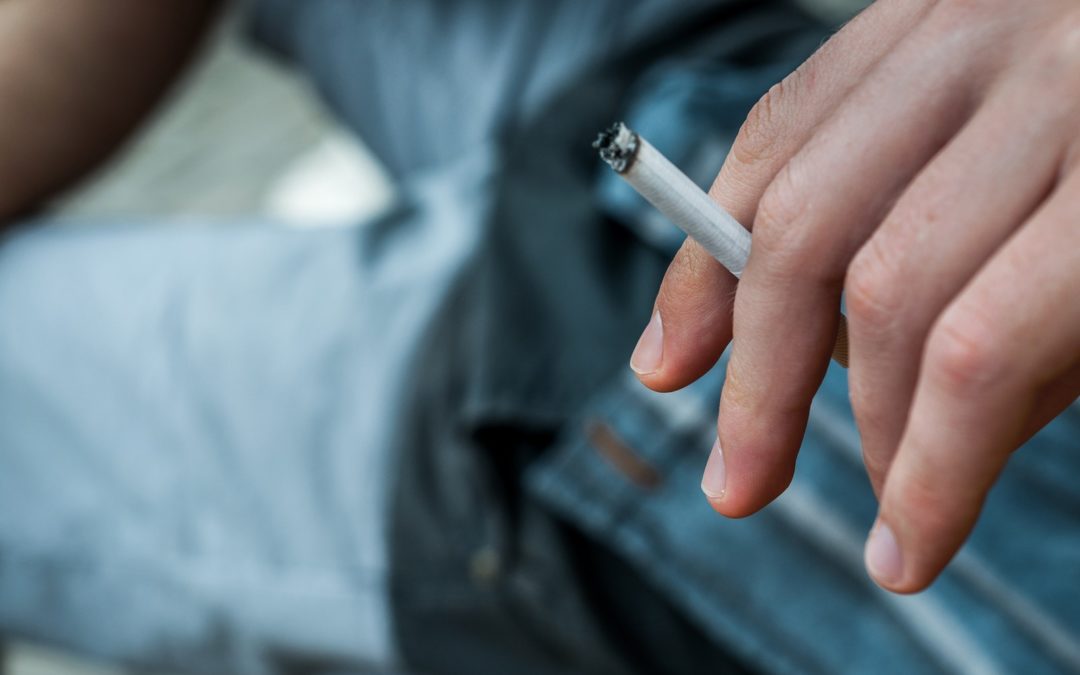Table of Contents
The teen years are a challenging time when mental health problems often come to the surface. One of the most common mental health problems reported in teens is social anxiety. This is a feeling of stress and tension when socializing, communicating, or dealing with other people.
Teens may avoid face-to-face interactions, struggle with job interviews or giving presentations in school, answer phone calls, and connecting with others. As a parent, it’s common to wonder why this is. Smartphones? Social Media? Climate Change?
Teens today are growing up in a rapidly changing world, from cell phones to economic instability and the long-lasting effects of the COVID-19 pandemic. There are several unique challenges that contribute to already susceptible teens developing social anxiety.
It’s important for parents to understand what’s driving this problem and strategies to support their youth. Read on to learn more about the impacts of social anxiety on teens.
What is Social Anxiety?
Social anxiety disorder (SAD) is a type of anxiety disorder (also known as social phobia) that impacts one’s ability to function or relax in social or group settings. After Generalized Anxiety Disorder, SAD is the second most common type of anxiety. Some people think social anxiety means you don’t want to talk to others. However, this is not always the case. Extroverts who enjoy talking and socializing with others may also struggle with social anxiety.
Social anxiety can occur on its own or paired with other mental health problems such as depression or trauma. For example, someone with SAD may isolate themselves, impacting their self-esteem and leading to symptoms of depression.
Likewise, teens who have experienced trauma may have unresolved issues that make it difficult for them to trust others, increasing these feelings of anxiety. This can lead to long-term challenges such as forming connections, maintaining relationships and even hindering work or academic performance.
According to the DSM-5, the manual used by mental health professionals to classify mental health conditions, the criteria for social anxiety disorder include:
- Persistent, intense anxiety or stress about specific social situations
- Fear of feeling judged, embarrassed, or humiliated
- Avoiding social situations that produce anxiety
- Anxiety or distress that interferes with daily functioning
- Fear or anxiety that is not explained by a medical condition, medication, or substance abuse
Signs of Social Anxiety in Teens
Social anxiety can look like classic symptoms of generalized anxiety or stress but is triggered by a social situation. Some symptoms are standard, while others can be difficult to spot. Teens with social anxiety may be branded as “weird,” “odd,” “awkward,” or even “rude.”
Some common signs of social anxiety in teens include:
Physical Symptoms:
- Blushing
- Shaking or trembling
- Sweating
- Increased heart rate or tightness in the chest
- Avoiding eye contact
- Muscle tension
- Nausea, vomiting or diarrhea
- Dizziness, blurred vision or headaches
Behavioral Symptoms
- Increased isolation
- Avoiding going to new places or meeting new people
- Dread meeting strangers
- Hate small talk
- Struggle with working or going to school
- Avoid basic interactions (going to the store, talking on the phone)
- Feel increased anxiety in parties, events, crowds, or group conversations
Social Anxiety Rates Among Teens
Anxiety is one of the most common mental health challenges that youth struggle with. According to the National Mental Health Institute, around 9% of teens struggle with Social Anxiety disorder.
According to a recent report, work, social events, and relationships are some of the most anxiety-provoking situations for youth. Teens may feel anxious in crowds, working with the general public, dealing with bosses and co-workers, and maintaining relationships with distant family members.
According to research, some of the rates of anxiety among teens include:
- 1 in 3 teens 13-18 have social anxiety
- Around 13% of teens have received mental health treatment for anxiety
- More than 30% do not believe their parents are sympathetic to their struggles
Why is Social Anxiety Common Among Today’s Teens?
Youth are already in a sensitive developmental period. They are still maturing and growing as they transition from teens to young adults. Regions of the brain that manage problem-solving, reasoning, and emotional regulation are still developing.
This can impact how teens think about social situations and can lead to increased anxiety. For example, a young person may see someone looking at them and immediately feel like they are being judged, even if there is no logical reason behind it. This is a common cognitive bias teens with social anxiety struggle with.
They are also exploring their passions, interests, likes, dislikes, and their place in the world. This can be an already stressful time planning for the future, navigating relationships, and exploring one’s identity. For today’s youth, this issue becomes even more complex—leading to increased rates of anxiety. The risk factors that cause this can be biological, environmental, or social.
Some of the common causes of social anxiety in teens include:
- Genetics
- Observing someone with social anxiety growing up
- Developmental trauma
- Overprotective parents
- Low self-esteem
- Spending too much time alone
- Deficit of social skills due to increased isolation
- Less face-to-face interactions
- Insecure attachment style
- Isolation during childhood
- Climate anxiety
- Economic instability
- Spending more time with technology than other people
- Increased isolation during & after COVID
Smartphones, Social Media, and The Impact on Mental Health
Most parents have probably wondered, are cell phones impacting teen mental health? Over 95% of youth report using their phones and social media daily. This has become a core part of their behavior patterns, and research shows that it can increase the risk of anxiety, depression, isolation, and FOMO (fear of missing out).
Teens may be flooded with posts that don’t represent reality, only showing the best part of a user’s life. This can set unrealistic societal expectations in their heads and make them feel anxious or insecure about their own circumstances.
Their social media feeds may also be filled with posts on political instability, climate change, natural disasters, and violent crime. The constant consumption of this kind of negative content can increase their stress levels and make them almost afraid to leave home.
How Young People’s Anxiety Has Worsened Since the Pandemic
According to the National Institute of Health, the 2019 COVID pandemic led to a 25% increase in the presence of social anxiety disorders. This was especially common among youth whose lives were isolated during a critical developmental period for socialization.
Many teens were cut off from social interaction during the pandemic, being forced to go to school online which impacted their relationships with peers. This, paired with other risk factors such as genetics, trauma, and temperament, is thought to play a large role in social anxiety among teens today.
How To Support Your Teen with Social Anxiety
Although it can feel distressing for parents to watch their teens struggle with face-to-face interactions, it is important to stay calm and understand that they could be struggling with social anxiety. Encourage your teen to talk about their anxiety, help them build effective communication skills, and, in some cases, get them connected with a mental health professional.
Some other ways to support your teen with social anxiety include:
- Be patient and understanding
- Actively listen to their concerns and validate their feelings
- Avoid overly criticizing them
- Educate yourself on social anxiety (a great resource to get started is this guide from the Anxiety & Depression Association of America)
- Help them reframe their thoughts and how they approach social situations
- Encourage them to get out of their comfort zones
- Celebrate their successes
- Offer practical support, such as accompanying them to social events
- Encourage them to practice mindfulness-based stress reduction (meditation, yoga, journaling, etc.)
Professional Help for Teens in Texas
If you identify warning signs of social anxiety in your teen, reach out for professional support to help find the best plan of treatment. At Clearfork Academy, our team of compassionate, licensed therapists understands the complex nature of teens and are here to support them in their mental health recovery. Reach out to our Admissions team to learn more.
Sources
Social Media and Youth Mental Health. US Surgeon General Advisory.
The Influence of the COVID-19 Pandemic on Social Anxiety: A Systematic Review. National Library of Medicine.
Social Anxiety Disorder. Mayo Clinic.
Mental Health Treatment Among Children Aged 5–17 Years. 2019. CDC.

Founder & CEO
Originally from the Saginaw, Eagle Mountain area, Austin Davis earned a Bachelor of Science in Pastoral Ministry from Lee University in Cleveland, TN and a Master of Arts in Counseling from The Church of God Theological Seminary. He then went on to become a Licensed Professional Counselor-Supervisor in the State of Texas.
Austin’s professional history includes both local church ministry and clinical counseling. At a young age, he began serving youth at the local church in various capacities which led to clinical training and education. Austin gained a vast knowledge of mental health disorders while working in state and public mental health hospitals. This is where he was exposed to almost every type of diagnosis and carries this experience into the daily treatment.
Austin’s longtime passion is Clearfork Academy, a christ-centered residential facility focused on mental health and substance abuse. He finds joy and fulfillment working with “difficult” clients that challenge his heart and clinical skill set. It is his hope and desire that each resident that passes through Clearfork Academy will be one step closer to their created design.
Austin’s greatest pleasures in life are being a husband to his wife, and a father to his growing children. He serves at his local church by playing guitar, speaking and helping with tech arts. Austin also enjoys being physically active, reading, woodworking, and music.





